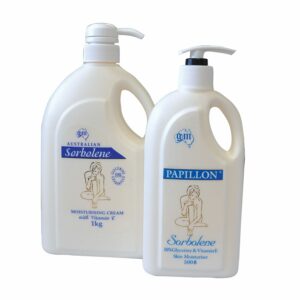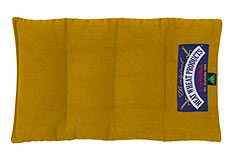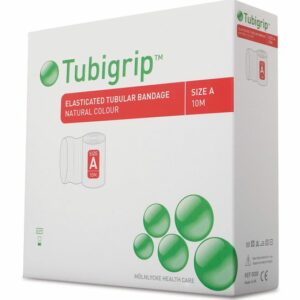Sports Recovery
Updated:
What is Recovery?
Recovery is the process by which physiological and psychological function is restored to the athlete following training or competition. Recovery is particularly important for athletes who compete in sports which occur regularly (e.g. weekly). In these sports, recovery is necessary to help minimize fatigue and maximize recovery between competitions. As a result of the high demands of elite sport and the constant desire to gain an “edge” over the opposition, effective recovery strategies have become a high priority in sporting teams and organizations in recent years.

How does Recovery help Performance?
The implementation of appropriate recovery strategies can enhance sports performance by:
- increasing physical adaptations following training or competition
- decreasing the likelihood of developing Delayed Onset Muscle Soreness (DOMS), or, decreasing its severity
- increasing the quality and quantity of performance of the next training session or competition
- reducing the risk of developing an overuse injury
- accelerating a quicker return to a sense of wellbeing or rejuvenated mental state
- decreasing stress
Recovery Strategies
A number of strategies are popularly used by athletes to improve recovery. These include:
- Active Recovery (Warm Down)
- Static Stretching
- Hydrotherapy (Ice Baths, Constrast Baths, Spas, Swimming Pool)
- Compression Garments
- Nutrition
- Hydration
- Sleep
- Massage
- Nutritional Supplements
- Relaxation/Meditation
Depending on resources available and other practicalities, some, or all of these strategies can be implemented to assist with sports recovery following training or competition. A number of these strategies are discussed in further detail below, including some practical applications.
Hydrotherapy
Ice Baths
The use of ice baths (also referred to as Cold Water Immersion) has become an increasingly popular recovery strategy in recent years – particularly in sports such as football, cricket, cycling and athletics. Ice baths can assist with sports recovery as well as help reduce pain and inflammation following injury. The recommended temperature range for the ice baths to be set at is 10–15°C. The duration that the athlete is in the ice bath should be approximately 14–15 minutes. These temperatures and durations have been shown to improve sports performance in athletes. Colder temperatures (i.e. less than 10 degrees) have been shown to add no additional benefit and usually results in the athlete being only able to remain in the ice bath for very short periods of time – thus, minimizing the positive effects of the hydrostatic pressure of the water. If it is not possible to use temperatures of 10–15°C, then slightly higher temperatures (e.g. 20°C) can be used to provide recovery benefit. In these instances, longer durations of exposure can be implemented (i.e. greater than 15 minutes). Ideally, the whole body should be under the water (excluding the head) to expose it to the cold and athletes should be standing rather than sitting to maximize the hydrostatic pressure effects of the water.
Contrast Baths

Members Only ContentBecome a PhysioAdvisor Member to gain full access to this exclusive content. For more details see Become a Member. Already a member? Login Now
Hot Water Immersion

Members Only ContentBecome a PhysioAdvisor Member to gain full access to this exclusive content. For more details see Become a Member. Already a member? Login Now
Compression Garments
Compression garments have become increasingly popular over the last few years. They can assist with recovery and can be worn between training sessions or overnight to help decrease muscle soreness, reduce swelling, increase blood flow and venous return, decrease blood lactate levels and decrease inflammation following injury. These changes help improve sports performance on the subsequent training session or competition.
Nutrition & Hydration

Members Only ContentBecome a PhysioAdvisor Member to gain full access to this exclusive content. For more details see Become a Member. Already a member? Login Now
Sleep
Ensuring adequate amount and quality of sleep, following training or competition, is essential for enhanced sports recovery. Aim to get at least 8 hours sleep following training or competition. In addition, try to maintain a regular sleep-wake cycle (i.e. go to bed and get up at the same time every day). For sleep quality, ensure your bed and the room temperature is comfortable (19-21°C is recommended). Do not have the television in the bedroom and avoid using your laptop, tablet or mobile phone before falling asleep – as the brightness of the screen stimulates the brain and will reduce the likelihood of you being able to fall asleep. Mentally, try to clear your mind, and avoid thinking of tomorrow’s tasks or chores, or anything else that may increase stress levels.
 Recommended Reading
Recommended Reading
- Leg Stretches
- Arm Stretches
- Warming Up and Cooling Down
- Injury Prevention
- Sports Injuries
- Ice or Heat?
- RICE Regime
- Taping Techniques
- Understanding Pain
- Injury Diagnosis Guides
 Physiotherapy Products to assist with Sports Recovery
Physiotherapy Products to assist with Sports Recovery
To purchase physiotherapy products to assist with sports recovery, click on one of the above links or visit the PhysioAdvisor Shop.
 Find a Physio to assist with Sports Recovery
Find a Physio to assist with Sports Recovery
Find a physiotherapist in your local area who can assist with sports recovery.
Become a PhysioAdvisor Member

Link to this Page
If you would like to link to this article on your website, simply copy the code below and add it to your page:
<a href="https://physioadvisor.com.au/health/injury-prevention/sports-recovery”>Sports Recovery – PhysioAdvisor.com</a><br/>PhysioAdvisor offers detailed physiotherapy information on sports recovery strategies such as ice baths to improve sporting performance and minimise injury likelihood following training or activity.
Return to the top of Sports Recovery.







